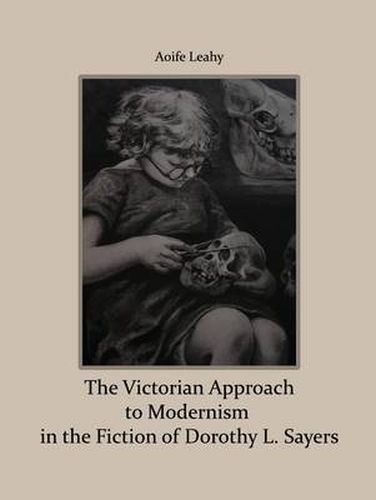Readings Newsletter
Become a Readings Member to make your shopping experience even easier.
Sign in or sign up for free!
You’re not far away from qualifying for FREE standard shipping within Australia
You’ve qualified for FREE standard shipping within Australia
The cart is loading…






Dorothy L. Sayers wrote bestselling detective novels and short stories in the 1920s and 1930s. Working within a popular medium, Sayers promotes nineteenth century and modernist literature with skills learnt during a period of employment in an advertising agency. In much of her fiction she recommends her choice of good books by name. She also suggests that taking Victorian literature as a foundation can bring her reader to a better understanding of literary modernism. With a didactic intent, Sayers shows how Lewis Carroll’s Alice can help us to eventually read Virginia Woolf, for instance. Her approach to educating her readers is always through entertainment. Sayers worked briefly as a teacher before taking up copywriting and retained important insights on how to improve the learning experience for any reader.Sayers’ admiration for the Victorian sensation author Wilkie Collins is widely recognised. This book examines Sayers’ attention to equally important Victorian influences from John Ruskin and George Eliot to Oscar Wilde, particularly in relation to the topic of education. She often questions the boundaries between popular and serious literature. Sayers’ personal views on the connections between mid-Victorian, late Victorian and high modernist authors are also considered.
$9.00 standard shipping within Australia
FREE standard shipping within Australia for orders over $100.00
Express & International shipping calculated at checkout
Dorothy L. Sayers wrote bestselling detective novels and short stories in the 1920s and 1930s. Working within a popular medium, Sayers promotes nineteenth century and modernist literature with skills learnt during a period of employment in an advertising agency. In much of her fiction she recommends her choice of good books by name. She also suggests that taking Victorian literature as a foundation can bring her reader to a better understanding of literary modernism. With a didactic intent, Sayers shows how Lewis Carroll’s Alice can help us to eventually read Virginia Woolf, for instance. Her approach to educating her readers is always through entertainment. Sayers worked briefly as a teacher before taking up copywriting and retained important insights on how to improve the learning experience for any reader.Sayers’ admiration for the Victorian sensation author Wilkie Collins is widely recognised. This book examines Sayers’ attention to equally important Victorian influences from John Ruskin and George Eliot to Oscar Wilde, particularly in relation to the topic of education. She often questions the boundaries between popular and serious literature. Sayers’ personal views on the connections between mid-Victorian, late Victorian and high modernist authors are also considered.